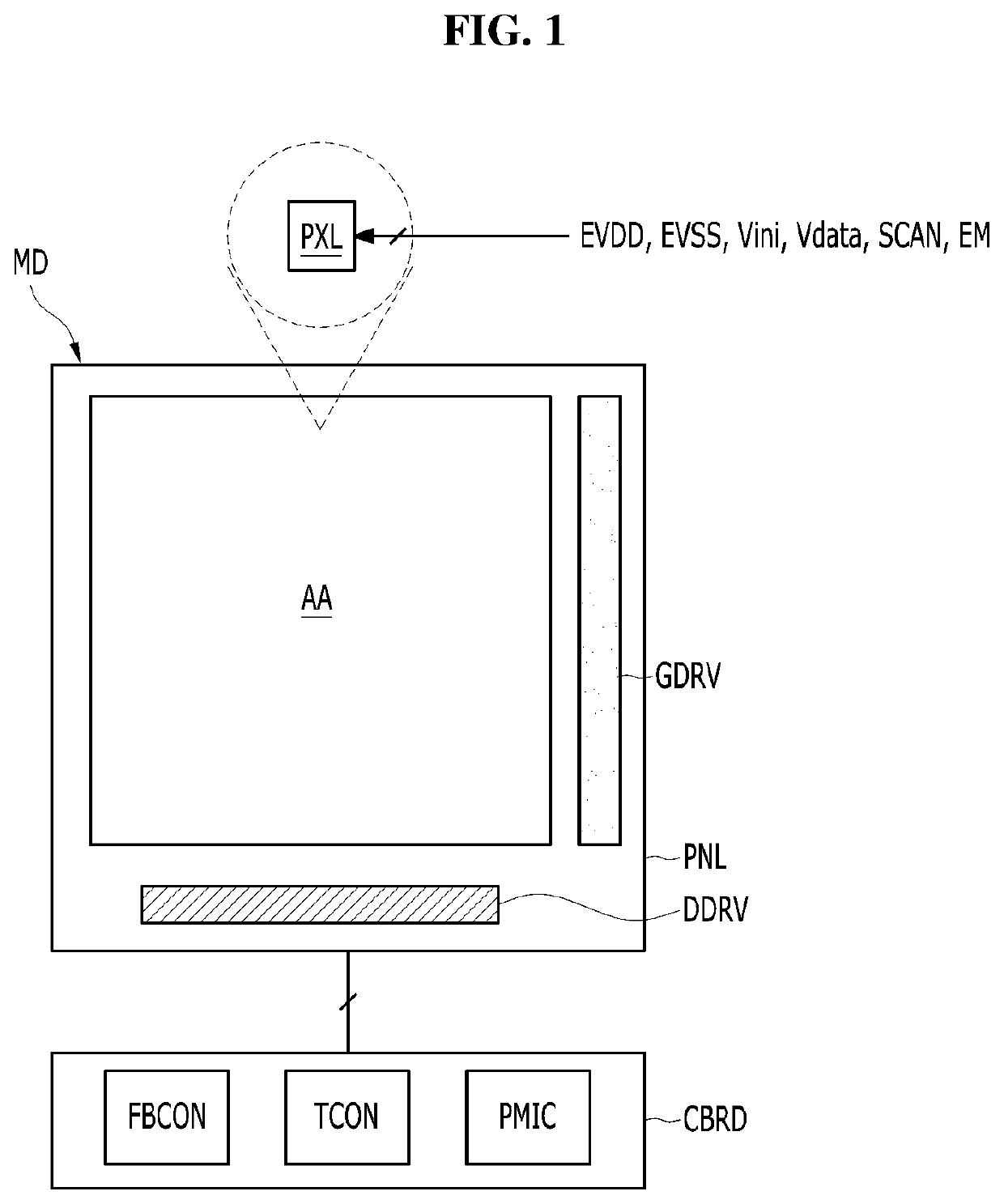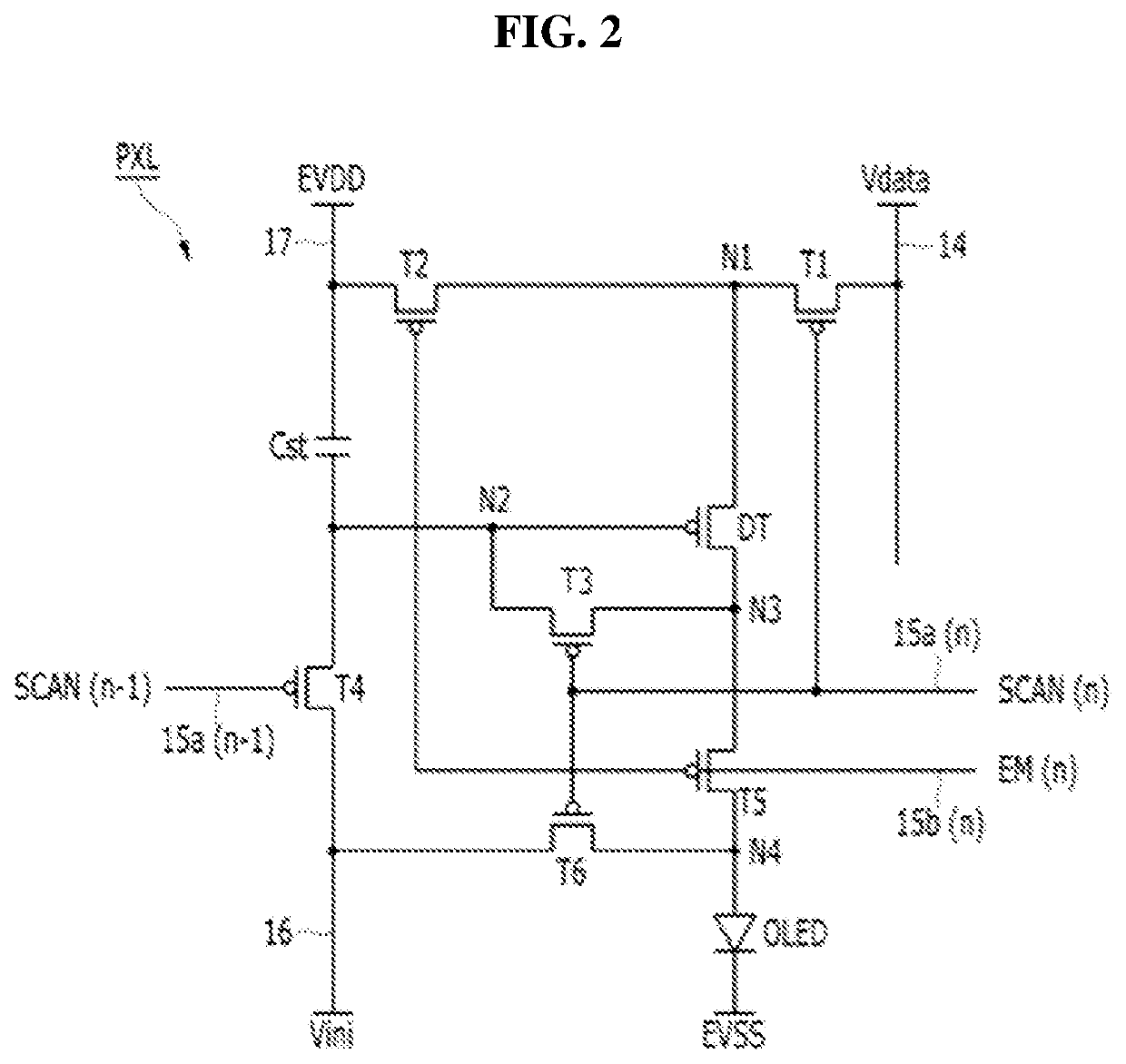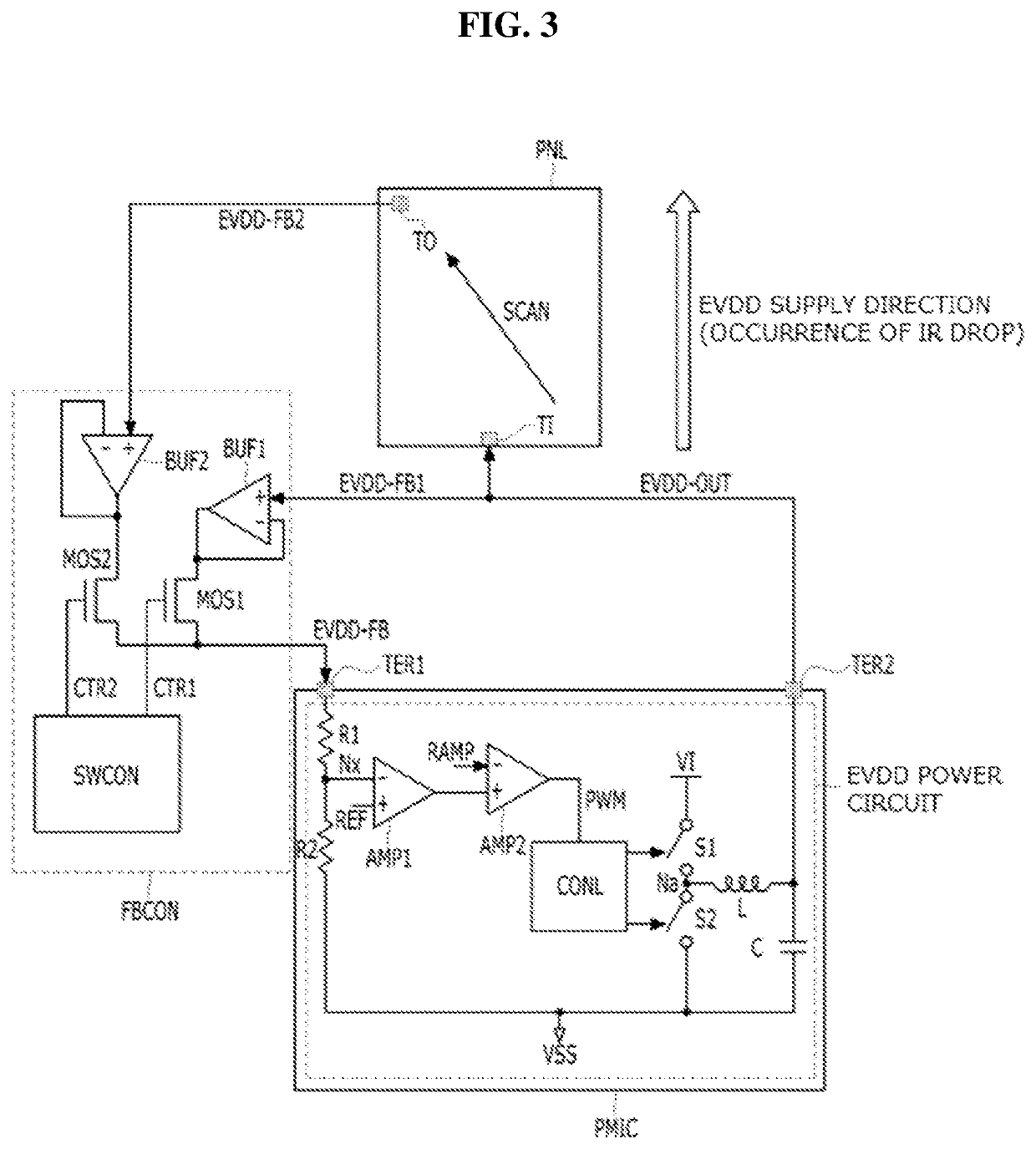Electroluminescence Display Apparatus
a technology of display apparatus and electroluminescence, which is applied in the direction of instruments, static indicating devices, etc., can solve the problems of luminance deviation between regions, low accuracy of compensation, and increase of chip cost, and achieve the effect of reducing image quality deviation
- Summary
- Abstract
- Description
- Claims
- Application Information
AI Technical Summary
Benefits of technology
Problems solved by technology
Method used
Image
Examples
first embodiment
[0066]FIG. 3 is a diagram illustrating a compensation system according to a first embodiment of an electroluminescence display apparatus. FIG. 4 is a diagram illustrating a driving timing of the compensation system according to the first embodiment. FIG. 5 is a diagram for describing a compensation operation of an EVDD power circuit in the compensation system according to the first embodiment.
[0067]Referring to FIGS. 3 and 4, the compensation system according to the first embodiment may include a display panel PNL, an EVDD power circuit, and a feedback control circuit FBCON.
[0068]A plurality of pixels connected to a first power line may be included in the display panel PNL, and each of the pixels may be supplied with a high level driving voltage EVDD-OUT through the first power line.
[0069]The EVDD power circuit may convert a final feedback driving voltage EVDD-FB input through a first input terminal TER1 to output the high level driving voltage EVDD-OUT to a first position TI of the...
second embodiment
[0083]FIG. 6 is a diagram illustrating a compensation system according to a second embodiment of an electroluminescence display apparatus. FIG. 7 is a diagram illustrating a driving timing of the compensation system according to the second embodiment.
[0084]Referring to FIG. 6, the compensation system according to the second embodiment may include a display panel PNL, an EVDD power circuit, and a feedback control circuit FBCON.
[0085]The display panel PNL and the EVDD power circuit of FIG. 6 may be substantially the same as descriptions given above with reference to FIG. 3. However, in terms of a configuration of the feedback control circuit FBCON, FIG. 6 may have a difference with FIG. 3. That is, MOS transistors MOS1 and MOS2 included in the feedback control circuit FBCON of FIG. 6 may be implemented as different channel types, and thus, the MOS transistors MOS1 and MOS2 may be controlled according to one output control signal CTR and a control signal generating circuit SWCON genera...
third embodiment
[0092]FIG. 8 is a diagram illustrating a compensation system according to a third embodiment of an electroluminescence display apparatus.
[0093]Referring to FIG. 8, the compensation system according to the third embodiment may include a display panel PNL, an EVDD power circuit, and a feedback control circuit FBCON.
[0094]The display panel PNL and the EVDD power circuit of FIG. 8 may be substantially the same as descriptions given above with reference to FIG. 3. However, in terms of a configuration of the feedback control circuit FBCON, FIG. 8 may have a difference with FIG. 3. That is, FIG. 8 may have a difference with FIG. 3 in that the feedback control circuit FBCON of FIG. 8 is implemented with thin film transistors TFT1 and TFT2, the thin film transistors TFT1 and TFT2 are provided in the display panel PNL, and separate buffers are not needed. The feedback control circuit FBCON of FIG. 8 may have an advantage where an area mounted on a control board is reduced compared to FIG. 3.
[...
PUM
 Login to View More
Login to View More Abstract
Description
Claims
Application Information
 Login to View More
Login to View More - R&D
- Intellectual Property
- Life Sciences
- Materials
- Tech Scout
- Unparalleled Data Quality
- Higher Quality Content
- 60% Fewer Hallucinations
Browse by: Latest US Patents, China's latest patents, Technical Efficacy Thesaurus, Application Domain, Technology Topic, Popular Technical Reports.
© 2025 PatSnap. All rights reserved.Legal|Privacy policy|Modern Slavery Act Transparency Statement|Sitemap|About US| Contact US: help@patsnap.com



